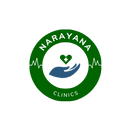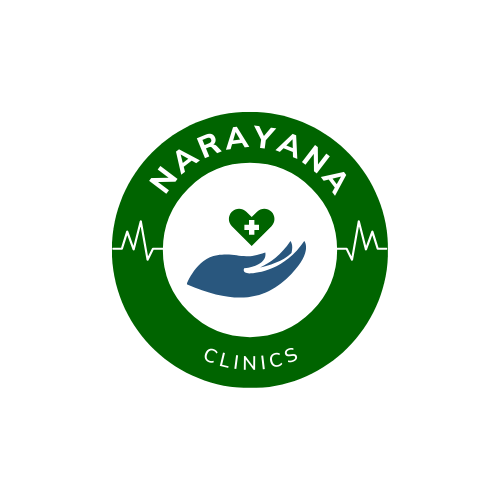Herbal Medicine
Herbal medicine, also known as herbalism or phytotherapy, involves the use of plants and plant extracts to prevent and treat health issues. The practice of herbal medicine has a long history, with roots in various ancient healing systems like Traditional Chinese Medicine (TCM), Ayurveda, and Indigenous herbal practices worldwide. The procedure of herbal medicine includes steps ranging from diagnosis and plant selection to preparation, dosage, and administration.

Detailed Procedure of Herbal Medicine
Here’s a step-by-step guide to the detailed procedure:
1. Consultation and Diagnosis
The first step in herbal medicine treatment is assessing the patient’s health and identifying the root cause of the condition.
a) Patient Interview:
- A trained herbalist will take a detailed medical history, including past and current health issues, symptoms, lifestyle habits (diet, exercise, sleep), emotional well-being, and family medical history.
- The interview may also cover any use of medications or supplements to avoid possible interactions with herbs.
b) Physical Examination:
- In some systems like Ayurveda or TCM, the herbalist may conduct a physical examination, including checking the tongue, skin, eyes, pulse, and sometimes urine or stool, to determine imbalances in the body.
c) Diagnosis:
- Based on the assessment, the herbalist identifies the underlying cause of the symptoms in terms of imbalances in the body’s energy, organ function, or systems (nervous, digestive, respiratory, etc.).
- Different traditional systems have different frameworks of diagnosis. For example:
- Ayurveda diagnoses issues based on imbalances in the three doshas: Vata, Pitta, and Kapha.
- TCM uses concepts of Qi (vital energy), Yin-Yang balance, and the Five Elements (Wood, Fire, Earth, Metal, Water).
2. Selection of Herbs
Once the diagnosis is made, the herbalist selects the appropriate herbs to treat the condition and restore balance to the body.
a) Herbal Properties:
- Each herb has specific medicinal properties. Herbs are chosen based on their effects, which may include anti-inflammatory, immune-boosting, calming, detoxifying, or stimulating actions. Herbalists also consider the herb’s flavor, temperature (cooling or warming), and its effects on different organ systems.
b) Types of Herbs:
- The herbalist may use single herbs or create a herbal formula that includes multiple herbs to work synergistically.
- Common types of herbs include:
- Adaptogens: Herbs like Ashwagandha or Rhodiola that help the body adapt to stress.
- Anti-inflammatory herbs: Turmeric or Boswellia for reducing inflammation.
- Digestive herbs: Ginger or Peppermint to promote digestion.
- Immunomodulating herbs: Echinacea or Astragalus to boost the immune system.
c) Ethical and Sustainable Sourcing:
- Herbalists often ensure that the herbs are sourced from ethical, organic, or wild-harvested suppliers, minimizing environmental impact and ensuring potency.
3. Herb Preparation Methods
Herbs can be administered in a variety of forms depending on the condition being treated and patient preferences. Different preparation methods bring out different medicinal properties of the herbs.
a) Teas (Infusions and Decoctions):
- Infusions: This method involves steeping delicate parts of the plant (like leaves or flowers) in hot water, similar to making tea.
- Example: Chamomile tea for relaxation.
- Decoctions: This method is used for harder plant materials like roots, bark, or seeds. The herbs are simmered in water for 20-30 minutes to extract the active compounds.
- Example: Dandelion root decoction for liver support.
b) Tinctures:
- Tinctures are concentrated liquid extracts made by soaking herbs in alcohol or vinegar over a period of weeks. The alcohol extracts both water-soluble and fat-soluble constituents.
- Example: Echinacea tincture for boosting immunity.
- Tinctures are taken in small doses (usually drops) diluted in water or juice.
c) Powders:
- Herbal powders are made by drying and finely grinding the herbs. Powders can be mixed into water, smoothies, or food.
- Example: Triphala powder, a blend of three fruits, used in Ayurveda for digestive health.
d) Capsules and Tablets:
- Herbal powders or extracts can also be encapsulated or compressed into tablets for ease of consumption.
- Example: Turmeric capsules for anti-inflammatory effects.
e) Topical Applications (Ointments, Creams, and Poultices):
- Some herbs are applied directly to the skin in the form of ointments, creams, or poultices (herbs mixed with water and applied to the skin).
- Example: Calendula cream for skin irritation or wound healing.
f) Essential Oils:
- Essential oils are extracted from herbs using steam distillation and are often used for aromatherapy, massage, or diluted in carrier oils for topical use.
- Example: Lavender oil for stress relief.
4. Dosage and Administration
Determining the correct dosage is essential to ensure safety and effectiveness. The dosage will depend on the herb, the preparation method, the patient’s age, weight, and condition.
a) Standard Dosages:
- Herbalists provide a recommended dosage for the specific herb or formula, which can range from small drops of tincture to a few cups of tea per day.
- For example:
- Herbal tea: 1-3 cups per day, depending on the strength of the infusion.
- Tinctures: 10-30 drops in water, 2-3 times a day.
b) Tailoring Dosage:
- Dosage may be adjusted based on the patient’s constitution, age, and severity of the condition. For children or sensitive patients, smaller doses may be given.
c) Duration of Treatment:
- The herbalist determines the length of time for treatment, which could range from short-term (a few days to weeks) for acute issues, or long-term (months or years) for chronic conditions.
- Regular follow-up is often required to monitor progress and adjust the treatment if needed.
5. Safety Considerations
While herbs are natural, they can still have side effects or interact with medications. Herbalists take various precautions to ensure patient safety.
a) Herb-Drug Interactions:
- Herbalists are trained to avoid herb-drug interactions that could interfere with conventional medications.
- For example, St. John’s Wort can interfere with the effectiveness of birth control pills and some antidepressants.
b) Allergies and Sensitivities:
- The patient’s history of allergies is carefully reviewed to avoid any herbs that may cause allergic reactions.
c) Toxicity:
- Some herbs can be toxic if used in large amounts or for extended periods. Herbalists ensure that doses are within safe limits and avoid potentially toxic herbs.
- For example, comfrey should be used externally only, as it can cause liver toxicity if ingested.
d) Pregnancy and Lactation:
- Special care is taken when prescribing herbs for pregnant or breastfeeding women, as certain herbs (like pennyroyal or blue cohosh) can stimulate the uterus or affect the baby.
6. Monitoring and Follow-Up
Herbal treatment is often a gradual process, and progress is monitored over time.
a) Regular Follow-Up:
- The patient is usually asked to return for a follow-up after a few weeks to assess how the treatment is working and to adjust the formula or dosage if necessary.
b) Symptom Tracking:
- Patients are encouraged to keep track of their symptoms, any changes in their condition, and how they are feeling in general. This feedback helps the herbalist refine the treatment.
c) Adjustment of Formulas:
- If the patient’s condition improves, the herbalist may modify or reduce the number of herbs in the formula. In cases where the condition does not improve, the herbalist may add or change herbs to target the issue more effectively.
7. Integration with Lifestyle and Diet
Herbal medicine often works best when combined with changes in lifestyle, diet, and stress management.
a) Dietary Recommendations:
- Many herbalists recommend dietary changes alongside herbal treatment. For example:
- Avoiding processed foods and sugar for patients with digestive or inflammatory conditions.
- Including nourishing, whole foods like leafy greens, fruits, and healthy fats.
b) Lifestyle Changes:
- Exercise, adequate sleep, mindfulness practices, and stress management techniques are also often recommended to support the healing process.
c) Holistic Approach:
- The herbalist may provide additional recommendations like breathing exercises, meditation, or yoga to complement the herbal treatment and restore balance to the body and mind.
Conclusion
Herbal medicine is a holistic, natural approach to health and healing that uses the medicinal properties of plants to support the body’s own healing processes. The detailed procedure involves a careful diagnosis, selection of herbs, proper preparation methods, and ongoing monitoring to ensure the best outcomes. When administered by a trained herbalist, herbal medicine can be a safe and effective way to address both acute and chronic health issues.

